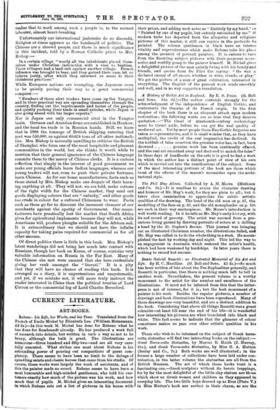CURRENT LITERAT URE.
ART-BOOKS.
2s.)-1n this work M. Michel has done for Rubens what he has done for Rembrandt already. He has produced a work full of research into details, but written in such a way as not to be hea.vy, although the bulk is great. The illustrations are numerous—three hundred and fifty-two—and are all very care- fully executed. What strikes one most about Rubens is his Astounding power of pouring out compositions of great com- plexity. There seems to have been no limit to the deluge of sprawling saints andclassic heroes that came from his studio. Of course, these works were largely the work of assistants, and of this the painter made no secret. Rubens seems to have been a most honourable and high-minded gentleman, who told his cus- tomers exactly how much of the picture was his work, and how much that of pupils. M. Michel gives an interesting document in which &thane sets out a list of pictures in his house with their prices, and adding such notes as " Entirely by my hand," or "Painted by one of my pupils, but entirely retouched by me." If modern taste has departed from the allegories and religious pictures of this master, it still can rejoice in the portraits be painted. The solemn gentlemen in black have an intense vitality and expressiveness which make Rubens take his place among the greatest of portrait painters. It is curious to turn from the flaunting subject pictures with their gorgeous acces- sories and worldly pomp to the painter himself. M. Michel gives a delightful picture of the man quietly living with his family and friends, and quotes from De Piles the saying : "He was a declared enemy of all excess, whether in wine, viands, or play." We get the picture of a man of great cultivation, interested in everything. The English of the present work reads smoothly and well, and in no way suggests a translation.


















































 Previous page
Previous page